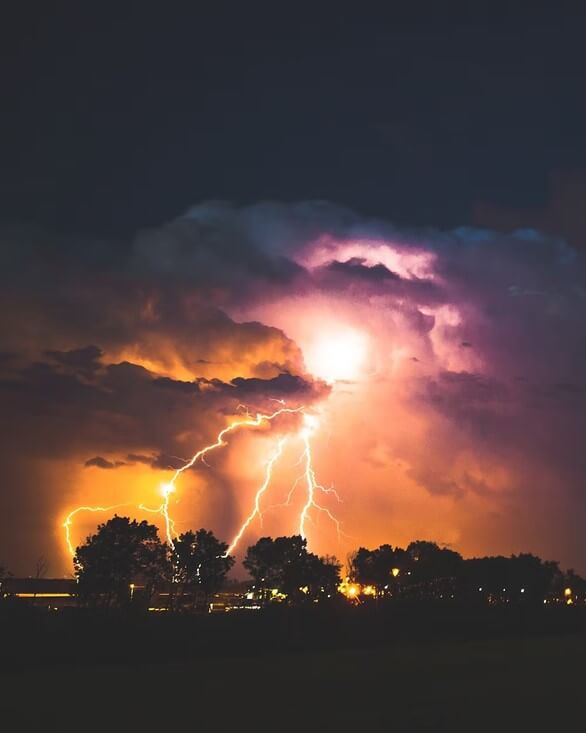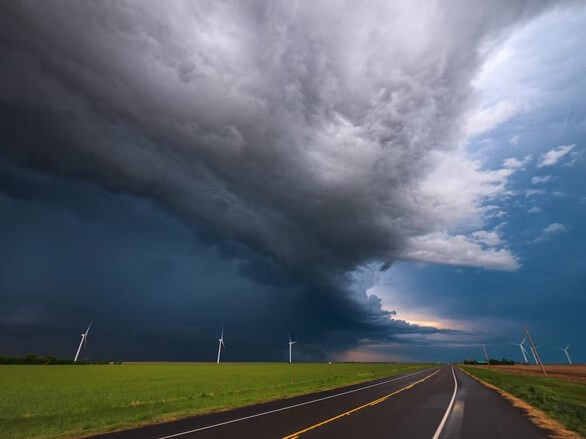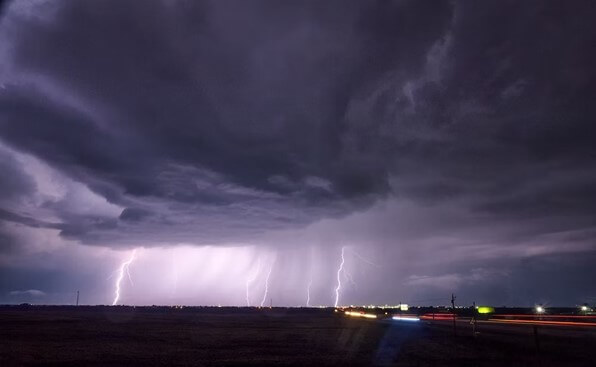On Monday, a major storm caused havoc along the East Coast, unleashing powerful winds and thunderstorms. Tragically, the destructive force of the storm claimed the lives of at least two individuals. Additionally, the stormy weather left over 1 million utility customers without power, spanning from Pennsylvania all the way down to Georgia. The storm swept through the region with relentless force and left a trail of destruction in its wake. Vicious winds tore through communities, uprooting trees, damaging structures, and causing widespread chaos.

Tragically, a lightning strike claimed the life of 28-Year-old man in Florence, Alabama. In a shocking incident that occurred on Monday, a 28-year-old man lost his life after being struck by lightning in a parking lot, according to local authorities.

Lightning strikes resulting in fatalities are considered very rare in the United States, with an average of approximately 20 deaths reported annually, according to the National Weather Service.
This storm system also claimed the life of a 15-Year-Old in Anderson County, South Carolina. The person’s name was Evan Christopher Kinley, who lost his life when a tree, uprooted by a fierce storm, struck him.
A person was injured when a tree collapsed onto a vehicle in Pennsylvania. Also, in Virginia a woman was successfully rescued after finding herself trapped inside her own home when a massive tree unexpectedly toppled onto the property.
Several regions have been severely impacted by recent weather conditions, including the area along the Mason-Dixon line and the southern Appalachians.
In a significant development, the Federal Aviation Administration (FAA) issued an instruction requesting airports to halt flights along a crucial travel corridor connecting major cities across the United States. Around 8000 flights were delayed, and 1,600 were canceled in or out of the US. This order affected prominent destinations such as Atlanta, New York, and Washington, resulting in many flight delays and cancellations, inconveniencing thousands of travelers.

A powerful storm system wreaked havoc along the coast, unleashing heavy rainfall, thunderstorms, and fierce winds reaching speeds of 70 mph. Stretching from New York to Mississippi, this weather occurrence resulted in significant travel disruptions, particularly in the skies. Through Monday evening, over 400 reports documenting the event of powerful winds have been registered throughout the region.
Shocking scenes of destruction unfolded in Knoxville as homes were left in ruins, and their roofs torn to shreds and debris scattered across neighborhood lawns.
As the sun set on Monday evening, a significant number of Americans found themselves struggling with a widespread power outage. Reports indicate that around 400,000 individuals were affected, with the highest concentration of outages reported in North Carolina, Pennsylvania, Georgia, and Maryland.
According to the Storm Prediction Center, there’s a slight chance of strong thunderstorms on Tuesday afternoon in some areas of Mississippi, Alabama, Georgia, and Florida. There’s also a higher risk in parts of Colorado, Nebraska, and Kansas, with an even greater risk for a smaller area in those three states.

On Tuesday, the areas facing a risk are mainly located to the south or west of where the damaging storms occurred on Monday. This is positive for those dealing with the aftermath of Monday’s storms. Still, it also puts over 5 million extra people in danger of experiencing strong winds and heavy rainfall on Tuesday.
Scientists have explained the troubling impact of climate change on storm patterns, asserting that hurricanes have become increasingly potent and heavy downpours have grown more frequent. These findings shed light on the intensified nature of recent storms, sending shockwaves through the scientific community and raising concerns about the future implications of climate change. Droughts, floods, wildfires, and heat waves have emerged as growing dangers, posing significant threats to communities worldwide.
Concerns over extreme rainfall have raised alarms about the potential for catastrophic flooding. Rising temperatures exacerbate the issue by enabling the atmosphere to retain higher moisture levels, resulting in heightened and abrupt precipitation patterns.
